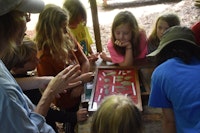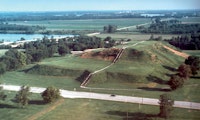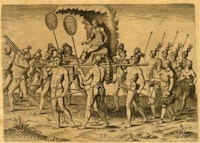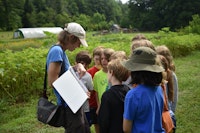
Ancient Native Americans of the Southeast
Native Americans have been living in the Southeast for at least 12,000 years. Recent archaeological evidence suggests that people have been living in the region for as long as 30,000 years or more. We don’t know very much about the ancient cultures of the Southeastern United States, but we find evidence of these ancient civilizations in the artifacts and features that are discovered during archaeological excavations throughout the region.
The Bering Land Bridge (Beringia - a land bridge between Alaska and Siberia) was exposed from 40,000BC to 11,500BC, 600 miles wide, with the sea level as much as 400 feet below the current sea level. People walked across the land bridge into Alaska about 13,000 years ago, ultimately spreading throughout North and South America. It is believed by many that there were other “crossings” to the Americas thousands of years earlier by land and water.
The most well known Native American culture in the Southeast is the mound building culture. Evidence of earthen mounds are found from Illinois, south into Louisiana and east to the Atlantic Ocean. Archaeological evidence dates the mound builders from 3500BC to 1700AD. Cahokia Mounds State Historic Site is the largest mound complex of the Mississippian culture, located near St Louis, near the confluence of the Mississippi, Missouri and Illinois rivers. Cahokia has over 100 known mounds, with the largest at over 100 feet tall and encompassing 14 acres. The population of Cahokia is estimated to have been over 20,000 people in 1150AD, a thriving urban center, rich in resources and trade. Evidence of long distance trade is found in the conch shells, copper nuggets and sharks teeth recovered in excavations, all travelling hundreds of miles to end up at Cahokia.
Below is a painting by Michael Hampshire of Cahokia as it would have looked at its peak and an image of Monks Mound at Cahokia Mounds State Historic Site as it looks today.


5 woodhenges have been found during excavations at Cahokia. A woodhendge is a circle of posts, much like Stonehenge in England. Henges would have been used as a calendar to mark the equinox and other important days in the year. The posts have long since rotted away but the stains in the soil show where the posts would have stood, also revealing the trench dug to help them erect the 24 inch round cedar posts.
The mound builders of the Southeast were still around in the 1500’s, and many explorers encountered them along their routes. Cofitachequi was a mound complex located near modern day Camden, SC. In 1540, De Soto encountered the Lady of Cofitachequi. The empress was carried to them on a litter covered with white cloth and she gave De Soto a string of pearls the size of golf balls from around her neck. She led them to her village and gifted them furs, hundreds of pounds of pearls, and food for their journey. The Spaniards then took her captive and forced her to lead them to the next village in her chiefdom. She later escaped and presumably made her way home. Below is an image of a 16th century engraving by Theodor de Bry of a Timucuan empress, a contemporary of the Lady of Cofitachequi.

Dr Henry Woodward, an explorer from Charleston, encountered Cofitachequi in an expedition into the interior. Dr Woodward wrote to Lord Yeamans in September 1670 describing Cofitachequi as “a country so delicious, pleasant and fruitful… it would prove a second paradise”, stating that 1000 bowmen were living there. (Dr Henry Woodward September 1670). By 1700 Cofitachequi had been effectively abandoned, due to disease and encroaching colonists.
There is so much to learn about the ancient cultures of the American Southeast. Green River Preserve has a unique role to play in the development of the story of these ancient civilizations. The over 10,000 acres of undeveloped land of GRP and the adjacent Dupont National Forest are nestled in the foothills of the Appalachian Mountains, the first valley as you come up from the coast. A spring that swells to become the Green River is located on Green River Preserve. We know that there were villages along the edge of the Green River, and evidence of trade from archaeological finds of seashells and rocks that originated from hundreds of miles away.
Archaeology investigations on the Preserve have shown that people have been living in the area for over 11,000 years. Continuing archaeological studies at Green River Preserve will help us have a clearer understanding of the past civilizations in the Southeast. Perhaps we will begin to understand why these civilizations disappeared. Was it natural disaster, war, loss of resources or disease, much like the pandemic we are experiencing now? Hopefully, we can begin to uncover these mysteries and have a better understanding of the people and cultures who came before us.
In a future blog we will talk about the Cherokee and other more recent Native American tribes in the area. Until then remember, “Culture is Everywhere”.
